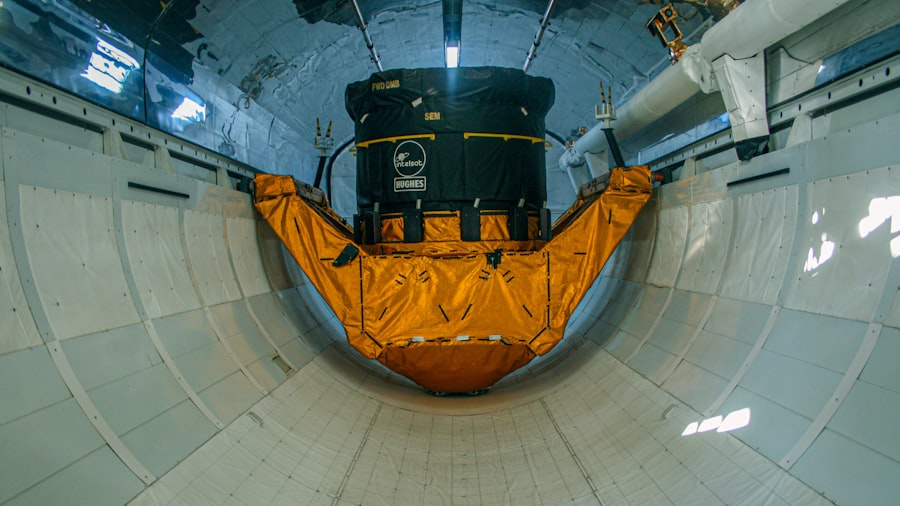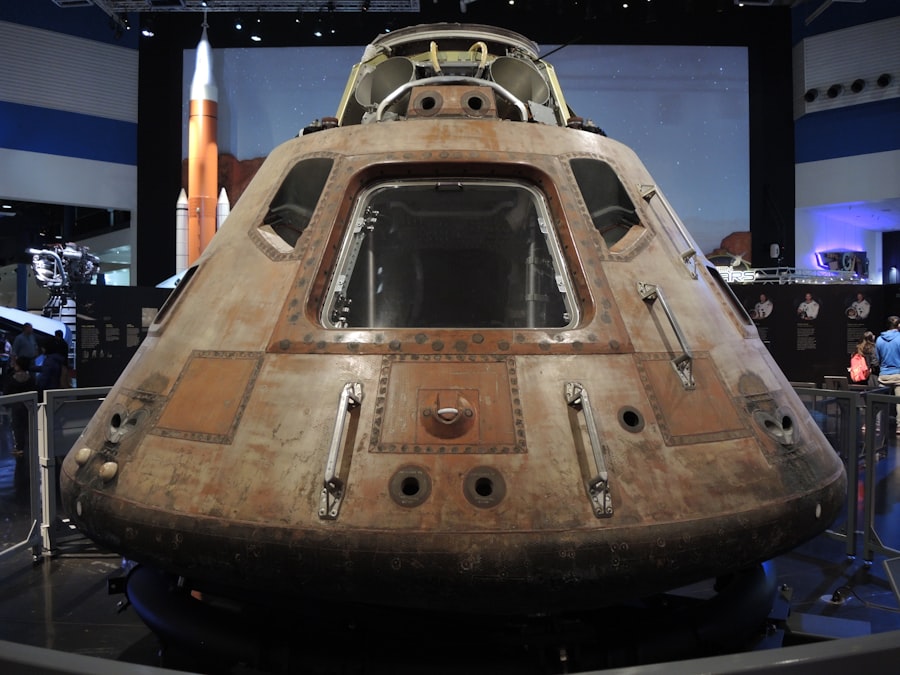Spacecraft engineering is a multidisciplinary field that encompasses the design, development, and operation of vehicles intended for travel or operation in outer space. This domain integrates principles from various engineering disciplines, including mechanical, electrical, aerospace, and systems engineering, to create complex systems capable of withstanding the harsh conditions of space. The history of spacecraft engineering dates back to the mid-20th century, with milestones such as the launch of Sputnik 1 in 1957 marking the dawn of the space age.
Since then, the field has evolved dramatically, driven by advancements in technology and an increasing interest in space exploration. The significance of spacecraft engineering extends beyond mere exploration; it plays a crucial role in scientific research, telecommunications, Earth observation, and national security. As humanity’s aspirations reach further into the cosmos, the demand for innovative spacecraft designs has surged.
Engineers must consider a multitude of factors, including mission objectives, budget constraints, and technological feasibility. The complexity of spacecraft systems necessitates a collaborative approach, where experts from various fields work together to solve intricate problems and push the boundaries of what is possible in space travel.
Key Takeaways
- Spacecraft engineering involves the design, development, and operation of spacecraft for various missions in outer space.
- Propulsion systems are crucial for spacecraft to maneuver and travel in space, with options including chemical, electric, and nuclear propulsion.
- Materials and structures used in spacecraft engineering must be lightweight, durable, and able to withstand extreme conditions in space.
- Avionics and guidance systems are essential for controlling and navigating spacecraft, including sensors, computers, and communication systems.
- Life support systems are necessary for sustaining human life in space, providing air, water, food, and waste management for astronauts.
Propulsion Systems in Spacecraft Engineering
Propulsion systems are at the heart of spacecraft engineering, providing the necessary thrust to launch vehicles into orbit and maneuver them through space. The choice of propulsion system is critical and depends on mission requirements, vehicle design, and operational constraints. Traditional chemical propulsion systems have been the backbone of space travel since the early days of rocketry.
These systems utilize the combustion of propellants to produce high-velocity exhaust gases that propel the spacecraft forward. For instance, the Space Shuttle employed a combination of solid rocket boosters and liquid-fueled main engines to achieve lift-off and orbital insertion. In recent years, there has been a growing interest in alternative propulsion technologies that offer greater efficiency and flexibility.
Electric propulsion systems, such as ion thrusters and Hall effect thrusters, have gained traction for deep-space missions due to their ability to provide continuous thrust over extended periods. NASA’s Dawn spacecraft, which explored the asteroid belt, utilized ion propulsion to achieve its mission objectives. This technology allows for significant fuel savings and enables spacecraft to reach destinations that would be impractical with conventional chemical propulsion.
Materials and Structures in Spacecraft Engineering

The materials and structures used in spacecraft engineering are pivotal in ensuring the integrity and performance of space vehicles. Spacecraft must endure extreme conditions, including intense thermal fluctuations, high levels of radiation, and vacuum environments. Therefore, selecting appropriate materials is essential for both structural integrity and thermal protection.
Lightweight materials such as aluminum alloys and composite materials are commonly used to reduce mass while maintaining strength. For example, carbon-fiber-reinforced polymers are increasingly utilized in satellite construction due to their high strength-to-weight ratio. Thermal protection systems (TPS) are another critical aspect of spacecraft design.
During re-entry into Earth’s atmosphere, spacecraft experience extreme temperatures that can exceed 1,500 degrees Celsius. To withstand these conditions, engineers employ ablative materials that dissipate heat through a process of material erosion. The Space Shuttle’s heat shield was constructed from reinforced carbon-carbon material that effectively protected it during re-entry.
As missions extend further into space, the development of advanced materials capable of withstanding prolonged exposure to radiation and temperature extremes becomes increasingly important.
Avionics and Guidance Systems in Spacecraft Engineering
| Metrics | Description |
|---|---|
| Reliability | The ability of the avionics and guidance systems to perform consistently and accurately in the harsh environment of space. |
| Accuracy | The degree to which the guidance systems can precisely navigate and control the spacecraft’s trajectory. |
| Power Consumption | The amount of electrical power required to operate the avionics and guidance systems during the mission. |
| Redundancy | The presence of backup systems to ensure continued operation in the event of component failure. |
| Weight | The mass of the avionics and guidance systems, which must be minimized to reduce launch costs. |
Avionics systems are integral to the operation and control of spacecraft, encompassing a wide range of electronic systems that facilitate navigation, communication, and data processing. These systems are responsible for ensuring that a spacecraft can accurately determine its position in space and execute maneuvers as required by mission parameters. Modern avionics rely heavily on sophisticated algorithms and sensors to provide real-time data on a spacecraft’s trajectory and orientation.
Guidance systems utilize a combination of inertial navigation systems (INS) and global positioning systems (GPS) to maintain accurate positioning during flight. For instance, the Mars Rover Perseverance employs advanced avionics to navigate the Martian surface autonomously. The rover’s guidance system integrates data from various sensors to make real-time decisions about its path and avoid obstacles.
Additionally, communication systems within avionics allow for data transmission between the spacecraft and mission control on Earth, enabling scientists to monitor performance and receive telemetry data throughout the mission.
Life Support Systems in Spacecraft Engineering
Life support systems are essential for sustaining human life during space missions, particularly those involving long-duration stays in orbit or on other celestial bodies. These systems must provide astronauts with breathable air, potable water, food supplies, and waste management solutions while ensuring a safe environment free from harmful contaminants. The complexity of life support systems necessitates a thorough understanding of biological processes and environmental control technologies.
One notable example is the International Space Station (ISS), which employs a sophisticated life support system that recycles air and water to minimize resupply needs from Earth. The ISS utilizes a combination of physical and chemical processes to remove carbon dioxide from the air and generate oxygen through electrolysis of water. Additionally, advanced filtration systems ensure that water is purified for drinking and hygiene purposes.
As missions extend beyond low Earth orbit—such as potential missions to Mars—engineers are exploring closed-loop life support systems that can sustain human life for extended periods without reliance on Earth-based resources.
Advancements in Spacecraft Communication Systems

Communication systems are vital for maintaining contact between spacecraft and mission control on Earth. As missions become more ambitious and complex, advancements in communication technology have become increasingly important. Traditional radio frequency (RF) communication has been the standard for decades; however, new technologies are emerging that promise enhanced capabilities.
One significant advancement is the development of laser communication systems, which utilize light waves to transmit data at much higher rates than conventional RF systems. NASA’s Laser Communications Relay Demonstration (LCRD) aims to test this technology by providing high-bandwidth communication links between satellites and ground stations. This could revolutionize data transmission for future missions by allowing for faster download speeds of scientific data collected from distant planets or asteroids.
Moreover, advancements in satellite constellations have transformed communication capabilities for both terrestrial and space applications. Companies like SpaceX with its Starlink project aim to deploy thousands of small satellites in low Earth orbit to provide global internet coverage. Such networks not only enhance communication for everyday users but also offer potential benefits for space missions by providing reliable communication links even in remote areas of space.
Robotics and Automation in Spacecraft Engineering
Robotics plays an increasingly vital role in spacecraft engineering, enabling automation of tasks that would be challenging or impossible for human astronauts to perform in space. Robotic systems can be deployed for various applications, including satellite servicing, planetary exploration, and construction of habitats on other celestial bodies. The use of robotics enhances mission efficiency while reducing risks associated with human involvement in hazardous environments.
One prominent example is NASA’s Mars rovers, such as Curiosity and Perseverance, which are equipped with advanced robotic arms capable of conducting scientific experiments on the Martian surface. These rovers can autonomously navigate challenging terrain while performing tasks such as drilling into rocks or analyzing soil samples without direct human intervention. The integration of artificial intelligence allows these robots to make decisions based on real-time data analysis.
In addition to planetary exploration, robotics is also being utilized for in-orbit servicing missions. The European Space Agency’s (ESA) RemoveDEBRIS project aims to demonstrate technologies for capturing and deorbiting space debris using robotic arms and nets. As concerns about space debris continue to grow, robotic solutions will be essential for maintaining a sustainable environment in Earth’s orbit.
Future Challenges and Opportunities in Spacecraft Engineering
As humanity continues to push the boundaries of space exploration, several challenges loom on the horizon for spacecraft engineering. One significant challenge is the need for sustainable practices in space operations. With an increasing number of satellites being launched each year, addressing issues related to space debris management is critical to ensuring long-term access to space.
Engineers will need to develop innovative solutions for debris removal while also designing spacecraft with end-of-life disposal strategies. Another challenge lies in advancing propulsion technologies for deep-space exploration. Current chemical propulsion methods may not suffice for missions requiring rapid transit times or extensive travel distances.
Research into nuclear thermal propulsion or solar sails could provide new avenues for efficient travel beyond our solar system. Despite these challenges, opportunities abound within spacecraft engineering as well. The growing interest from private companies in space tourism and commercial satellite launches is driving innovation at an unprecedented pace.
Collaborative efforts between government agencies like NASA and private enterprises can lead to breakthroughs that benefit both sectors. Furthermore, advancements in artificial intelligence and machine learning hold promise for enhancing spacecraft autonomy and decision-making capabilities during missions. As engineers continue to explore new frontiers in materials science, propulsion technologies, and robotics, the future of spacecraft engineering appears bright with potential for groundbreaking discoveries that could reshape our understanding of the universe.


